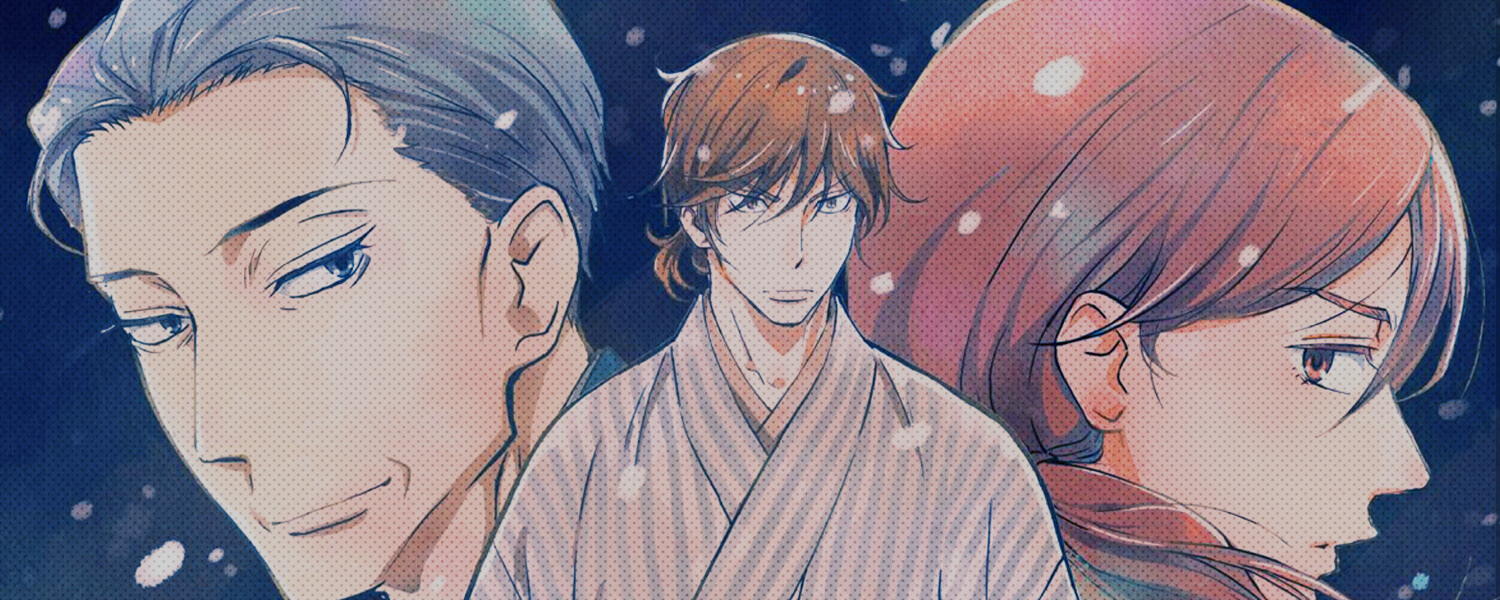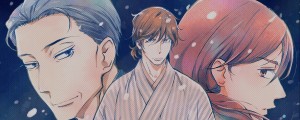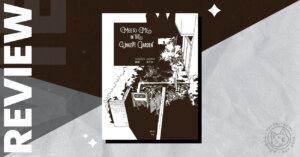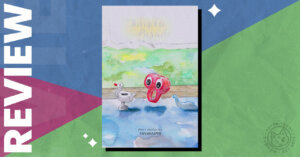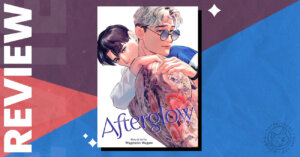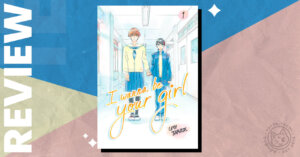This season, there weren’t many shows I was anticipating, mostly because I wasn’t fully aware of what was being released. Showa Genroku Rakugo Shinju was one of the shows my brother introduced me to, and I was left rather impressed by it. Showa genroku roughly translates to “the flourishing Showa era” and refers to the 1960s and 1970s. Rakugo means “storytelling” and refers to a specific type in which one person sits on a stage in front of an audience and tells a story, acting as both narrator and any character that may appear in the story. The final word in the title, shinju, can be translated as “lovers’ suicide.” With such an intriguing title, what could this show have in store us? Here’s my take after watching the first three episodes.
Story
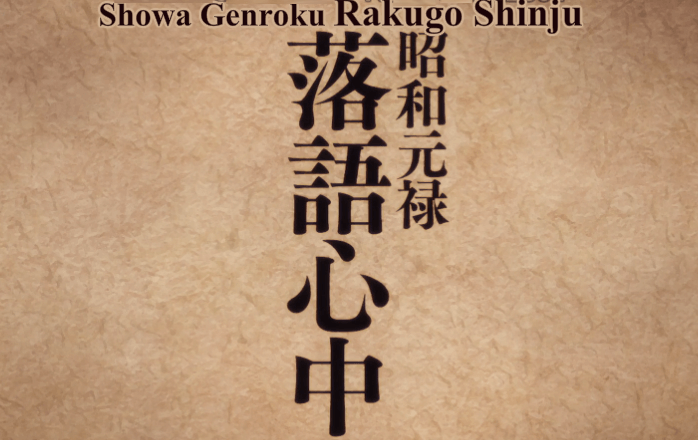
To begin with, I feel the general concept of the show is pretty fresh. One would probably be hard-pressed to find an anime that depicts the cultural entity of rakugo. More specifically, I’m rather intrigued by the story presented thus far: a young man who has just gotten out of prison pursues a rakugo artist he idolizes in the hopes of becoming his apprentice and entering into the profession. While the first episode shows Yotaro (a nickname given to him by his mentor which means “fool”) as he begins his journey of training under Yurakutei Yakumo, the second and third episodes are stories told by Yakumo to Yotaro and Konatsu (Yakumo’s ward) regarding his own journey as a budding rakugo artist along with Konatsu’s father. Despite the shift in focus, the story of his beginnings are rather interesting. Since the first episode is almost 50 minutes in length, I feel that the show put a nice amount of focus on the characters of its present that going to the past only allows for some light to be shed on how things currently are. While I hope the anime returns to the 1960s/1970s setting at some point, I don’t mind the shift for now.
Characters
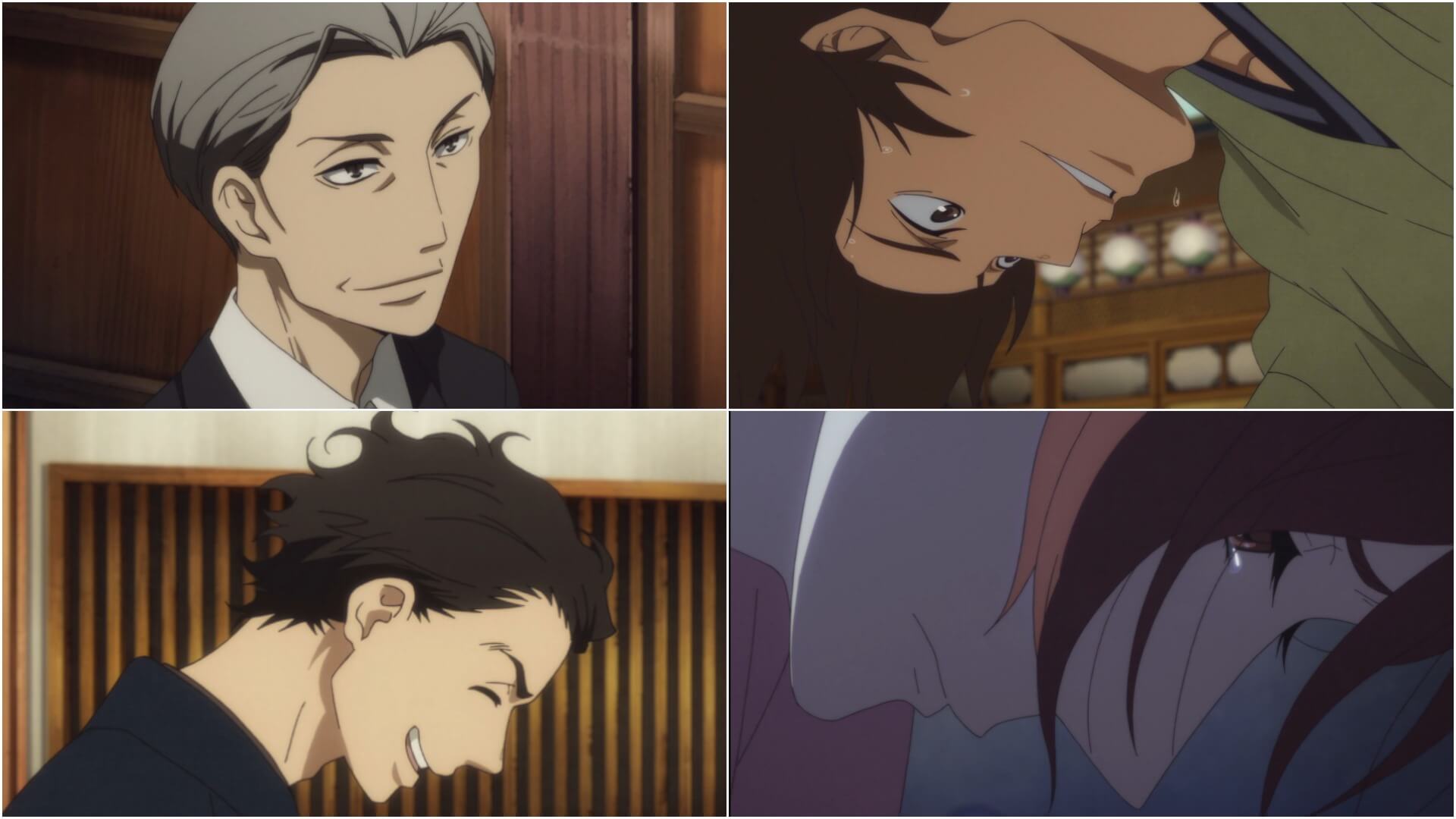
There are a variety of characters in Rakugo Shinju, each with a distinct personality. Yurakutei Yakumo (named Kikuhiko earlier in his career), the “great artist,” as Yotaro calls him, has his moments of kindness: he does willingly let a former criminal live with him as an apprentice, after all. However, there were moments in the first episode during which he was rather cruel: his relationship with his ward, Konatsu, is somewhat icy due to her own suspicions, but he certainly doesn’t help matters when he fails to speak of her father in a respectful manner. Because of the shift in story to his life when he was younger, the audience is able to get a better idea of his own hardships: his injury, his difficulties with rakugo, and even how his life was affected by World War II. Konatsu has her own difficulties, too. Both of her parents have passed away, and because she can’t fully remember the moment of their passing, she believes Yakumo was involved in at least her father’s death from what she does recall. Konatsu also has the desire to carry on her father’s legacy as a rakugo artist. She tells Yotaro the story “Shinigami” in his style, and for a while helps train Yotaro in her father’s manner of storytelling. However, she seems to want to become a rakugo artist herself and perform as her father did. While she’s passionate about his legacy, she has frustrations over not being able to follow in his footsteps due to her being a woman. I’m quite curious to see how she grows over the course of the story, if the narrative does in fact return to the show’s present-day. As for Yotaro, a comparison is made between him and Sukeroku (named Hatsutaro earlier in his career), Konatsu’s father. While they do both have a light-heartedness and seem to perform rakugo in a more caricature-like style, there are definite differences between them. Sukeroku has an air of confidence about him, while Yotaro is still getting his bearings. This is evident in their performances: during his first performance, the scene cuts to Yotaro’s ear and you can hear the audience laughing, which indicates that he’s noticing the crowds reaction. However, you can also see throughout the performance that he’s sweating quite a bit. It could mean that he still has nerves or that he’s getting a little wild and excited because of the crowd’s reaction, which leads him into putting more effort into his performance. A later scene also has Yotaro tell his mentor that he’s still unsure of what kind of rakugo he wants to do. Sukeroku, however, knows exactly the kind of rakugo he wants to perform, even if his mentor refers to it as “wild.” While his performance is more boisterous than his peer Yakumo, there’s still a sense of control over it: everything he’s doing in his performance is done purposefully, and he doesn’t become super over-the-top. Sukeroku remains calm and collected the whole way through. Overall, the main cast is a diverse bunch of characters, and I’m excited to see where the story takes them.
Animation
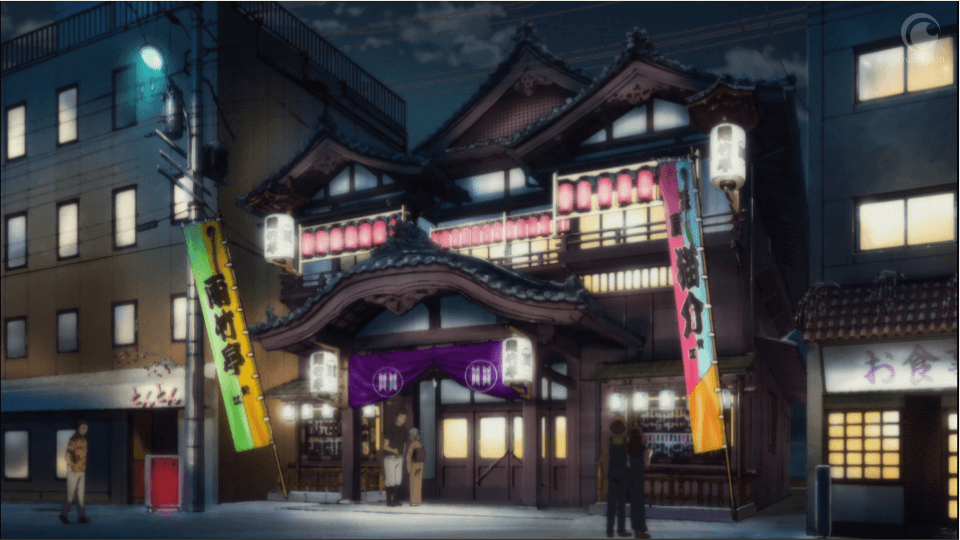
I really like the art style in this show. The character designs remind me a bit of mangaka Natsume Ono’s style, with the tall statures of the characters and their more longish faces. The detail put into the characters’ facial expressions, particularly during the rakugo performances, is nicely done and warrants a closer look. The atmosphere of the settings also really pops, such as the architecture and lighting for both the outside and inside of the theaters. The clothing, along with the soundtrack, really add to the story: I really got the sense that the story took place in the 1960s without anyone needing to mention the year. For Japanese viewers, the title alone indicates the time period, but those outside of that audience may not know the range of years comprised within the Showa era. The show finds a way to indicate the time period throughout, and I really appreciate the expression of time through the visuals as well as the sound.
Sound
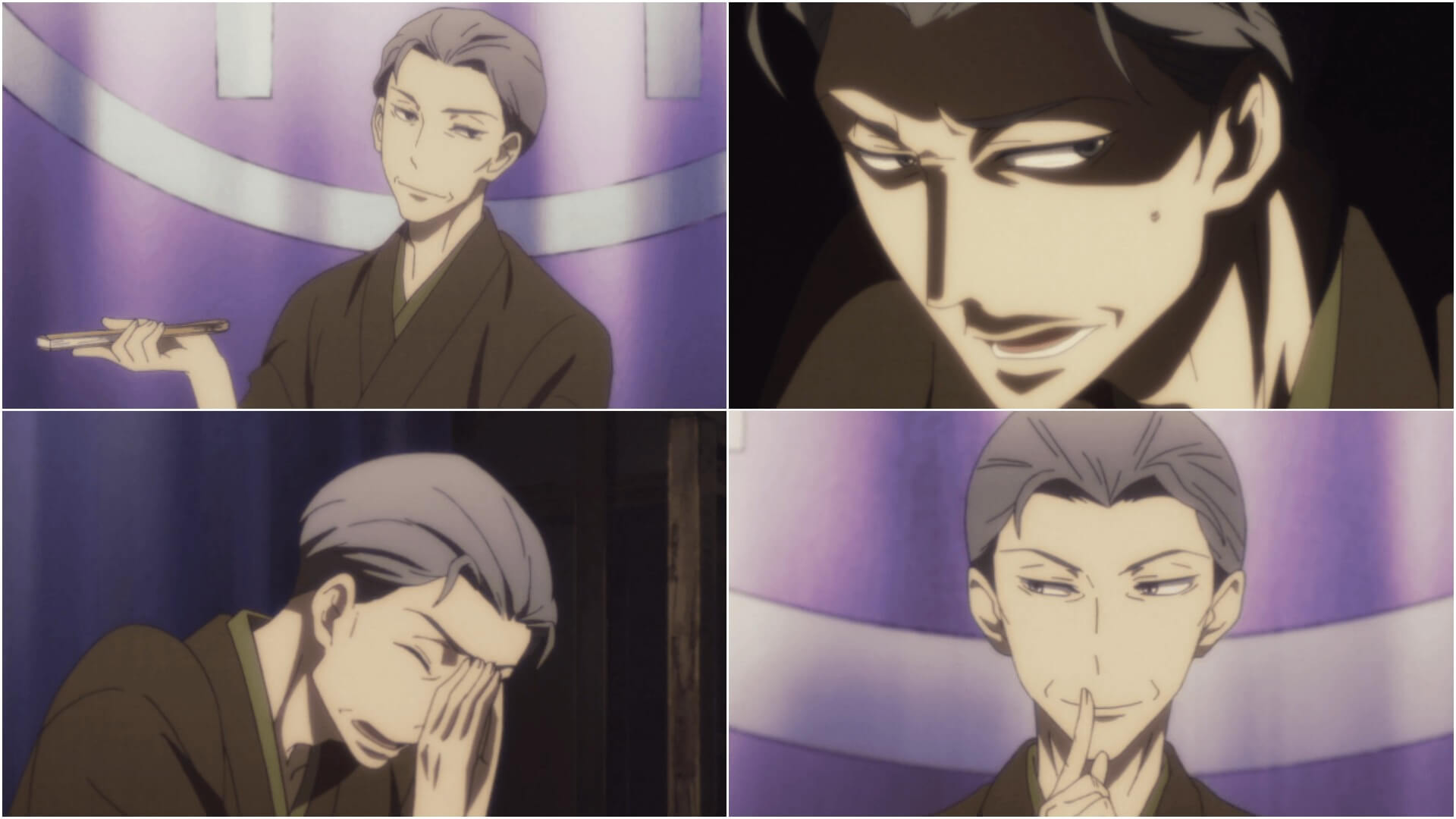
The soundtrack so far consists of jazzy, big-band tunes and quieter shamisen pieces. The sound reminded me of Kids on the Slope, another anime that takes place during the 1960s. Perhaps that’s why the time period felt apparent to me. In any case, the use of music is pretty balanced so far. While it does get its time to shine, it also is good at enhancing certain moments, such as certain points within each rakugo story. I also appreciate that the show allows some scenes to play out without adding any music to it: the focus is kept on the characters and whatever they’re discussing, making the use and non-use of the soundtrack more affective. The acting in the show is also excellent. It’s not only a matter of acting well, but acting at the same level of the characters who perform rakugo. If they’re unskilled, the voice actor needs to make apparent the failings of the character’s performance, and that can be rather tricky. So far, the cast has done a wonderful job not only playing the characters they’ve been assigned to, but also playing the characters their characters play.
Based on the first three episodes, I’m rather pleased with how the story is going so far. The premise is different from many of the shows that have been released in recent years, and for what the show has done so far, I believe it has done well. Will it be able to stay the course and deliver a stellar performance the whole way through? I certainly hope so. I’ll continue watching Showa Genroku Rakugo Shinju to see just how the story plays out. I readily recommend anyone else to do the same. You currently can watch Showa Genroku Rakugo Shinju on Crunchyroll.
Did you watch any of Rakugo Shinju? What were your impressions? If you didn’t, does the premise entice you, or would you rather wait and see the consensus once the show has ended before you give it a view? Leave your thoughts in the comment section below!

Featured Sponsor - JAST
The sweetest romance and the darkest corruption, the biggest titles and the indie darlings; for visual novels and eroge, there's nowhere better.
Big thank you to our supporters
From their continous support, we are able to pay our team for their time and hard work on the site.
We have a Thank-You page dedicated to those who help us continue the work that we’ve been doing.
See our thank you page